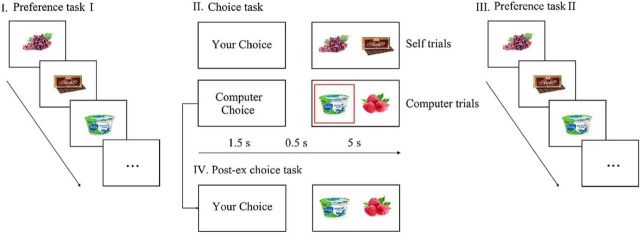Figure 1.
Free choice paradigm. I. During Preference task I, participants rated food items presented for 3 s on the screen. II. Next, during Choice task in Self-trials, subjects freely selected one of two food items (Self-difficult trials evoked strong cognitive dissonance, Self-easy trials evoked weak cognitive dissonance), whereas in Computer trials, subjects had to select the item that has been selected by the computational algorithm (highlighted by a red square). III. In Preference task II, participants rated the same food items again. Participants were reminded about their choices (if any) during the Choice task (e.g., “You rejected it”). IV. Finally during control Post-ex Choice task, participants chose items from pairs that had been presented during Computer trials.

